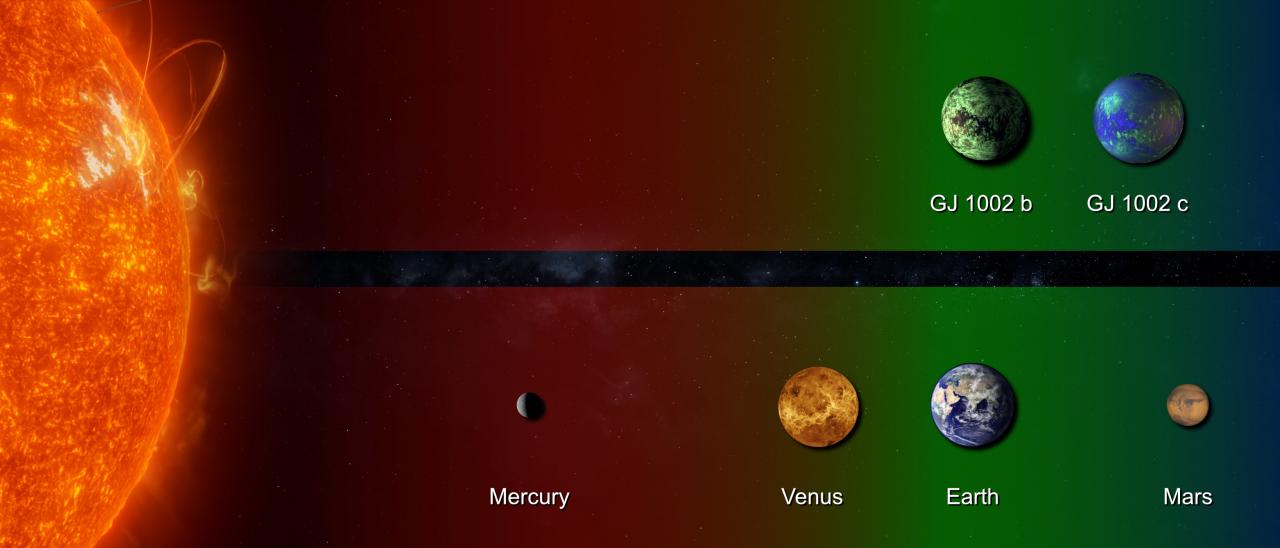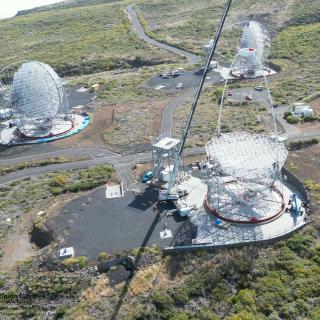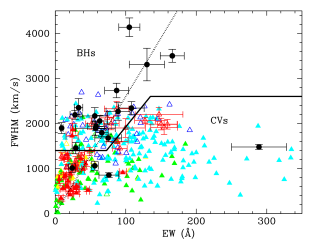Red dwarfs are the most common stars in the galaxy. In recent years they have become key targets in the search for exoplanets. These stars are usually accompanied by rocky planets and due to their low brightness, their habitable zone is close to the star, making it easier to find planets that are within it.
GJ 1002 is a red dwarf just one-eighth the mass of the Sun, located only 15.8 light-years away. Using radial velocity measurements from the ESPRESSO and CARMENES spectrographs, we have discovered the presence of two Earth-like and potentially habitable planets. The planets, GJ 1002 b and c, have masses of 1.08 and 1.36 Earth masses, respectively, and orbit with periods of 10.3 and 21.2 days, respectively. Both are within the habitable zone of the star. Its inner planet receives radiation slightly less than Earth's, while the outer planet receives radiation slightly higher than Mars.
Due to GJ 1002's proximity to the solar system, its planets could be studied by future space missions, such as ESA's LIFE mission, or instrumentation of future giant telescopes, such as ANDES for the 39-meter ELT telescope.



